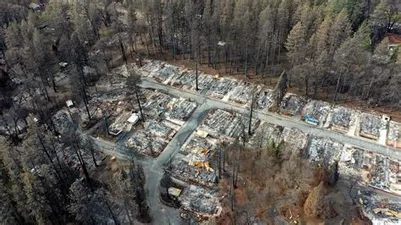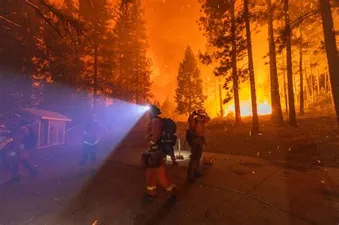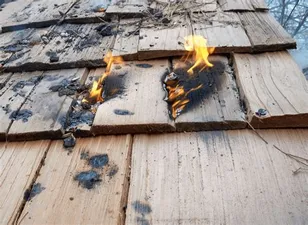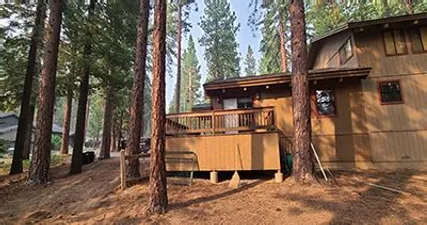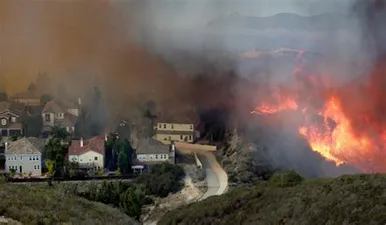experience to be trusted
about
Being Ready starts with hardening your home and maintaining adequate Defensible Space around your home and property. Home Hardening means using ignition-resistant materials on and around your home to help it withstand flying embers and radiant heat. Defensible Space is the buffer created by removing dead plants, grass and weeds to help keep wildfire away from your home.
It takes a combination of Home Hardening and Defensible Space to give your house the best chance of surviving a wildfire. Click on the buttons below to help protect your family, home and community.
Two Front Approach
Harden Your Home
Fire hardened means your home is prepared for wildfire and an ember storm. It does not mean fireproof. Home hardening addresses the most vulnerable components of your house with building materials and installation techniques that increase resistance to heat, flames, and embers that accompany most wildfires.
Preparing Your Home
There are three ways your home can be exposed to wildfire: direct flames from a wildfire or burning neighboring home; radiant heat from nearby burning plants or structures; and flying embers
why it matters
How Homes ignite
Wildfires spread by a combination of a moving, flaming fire “front,” and airborne embers carried by smoke and wind. Buildings ignite during wildfires as a result of one or more of the three basic wildfire exposures, which include:
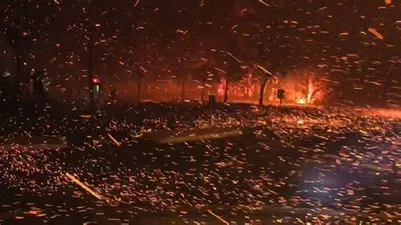
Ember Storm
Embers are small pieces of burning material that can travel more then a mile ahead of the main fire front. They can create spot fires when they land on combustible materials such as leaves in you gutter or plants under your windows.
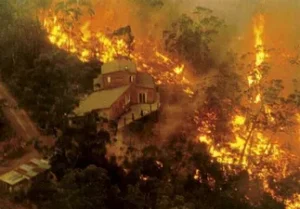
Radiant Heat
Radiant heat generated from burning structures or plants can be hot enough to ignite a house without direct flame contact. This is particularly difficult in densely populated area, where the heat from one burning home can ignite the next.
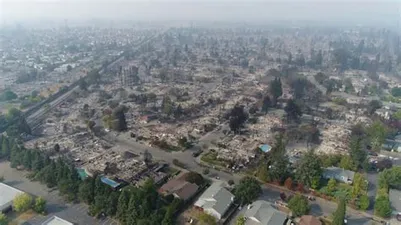
Direct Flame Contact
Depending on time and exposure, direct flame contact can ignite your home. The flaming front of a wildfire is often not hot enough to ignite a house, but plants under windows ignited by embers or direct flame can break glass, allowing fire to enter the house.
We Can Help
From roof and gutter clearing, to weed-eating, all the way to vent retrofit and gutter guard installation. We are here for you!
Two Front Approach
Create Defensible Space
Maintaining defensible space is the law within 100 feet of a home in wildfire-prone areas, and highly recommended elsewhere. If a garage, shed, your neighbor’s house, or the property line is closer than 100 feet, it is especially important to harden your home to reduce vulnerability to radiant heat.
What Is Defensible Space
Defensible space is the area around a house/structure and reaching toward an oncoming wildfire. This is an area where the vegetation has been modified to reduce the wildfire threat and to provide an opportunity for firefighters to effectively defend the structure.
Zone 0
Immediate Zone
This zone extends from your home to 5′ out. It’s the area closest to your house, including plants, decks, outdoor furniture, and the outside walls and coverings. This area is most vulnerable and should be more aggressively maintained for fire resistance
Zone 1
Intermediate Zone
This zone extends from 5′ to 30′ or property line. There should be no fire fuels under decks or windows. This is especially important during the high wind conditions of late summer and fall. It is imperative to patrol for and remove all fuels, such as leaves and pine needles, which tend to build up and become traps for burning embers.
Zone 2
Extended Zone
This zone extends from 30′ to at least 100’–more defensible space may be required based on topography, vegetation, or building construction (for example, if you live on a hill, in a drainage, or an area surrounded by unusually dense or flammable vegetation, or have a wood shake roof, as much as 150′ may be required).
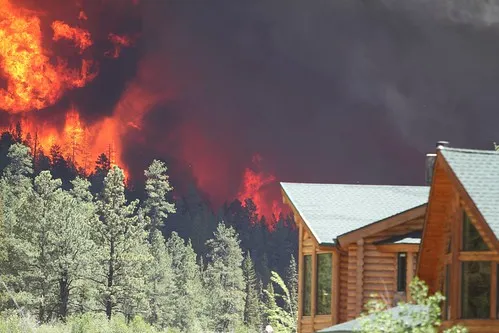
why it matters
Wildfire statistics
- 4.5 million U.S. homes are at high or extreme risk from wildfires, with over 2 million in California alone. (Verisk)
- There were 58,985 wildfires in 2021, which affected 7.1 million acres, compared to just 18,229 wildfires and 1,323,666 acres lost in 1983 when official record-keeping began. (NIFC)
- Humans cause as many as 90% of wildfires, with the remaining 10% caused by lava and lightning. (U.S. Department of Interior)
- Five of the top 20 largest California wildfires occurred in 2020, with four taking place in 2021. (CAL FIRE)
- 2020 wildfires cost California 4.2 million acres of land, 10,500 structures and the lives of at least 31 people. (Center for Disaster Philanthropy – CDP)
- Wildfires, drought, and heatwaves accounted for $20.36 billion in economic losses and $8.69 billion in insurance losses in 2021. (Insurance Information Institute – Triple-I)
- To date in 2022, there have been 50,951 wildfires with over 6.7 million acres burned. (NFIC)
- The average claim paid out by State Farm for a wildfire as of March, 2022 was $224,000, which shows an 8% increase over the prior year. California, Colorado and Oregon make up 95% of paid claims. (State Farm)
About Me
I am here to bring my 20+ years of wildland fire fighting experience to protect your home to the best of its ability.
My career began with the 2003 Southern California fire siege. As a new seasonal firefighter I observed some erratic fire behavior and unfortunately witnessed hundreds of homes destroyed from the inside out. This pattern continues year after year and is only getting worse.
It's time to get on the offensive and be proactive with home hardening and fuel reduction.
Protect your home and neighbors
1st Defense Home Hardening can provide that opportunity with a fair competitive price.
Specializing in the removal of flammable vegetation threatening your home, inspecting the exterior of your home for any weaknesses.
Preventing the ability for an ember to land and start your roof, deck, gutters, and ultimately your home on fire.
start your project now
contact us today
Andrew @1stdefensehomehardening.com
We reply within 24 hours
Have any questions?
(707) 955-4740
Working hours
Mon-Fri, 9am until 6pm

